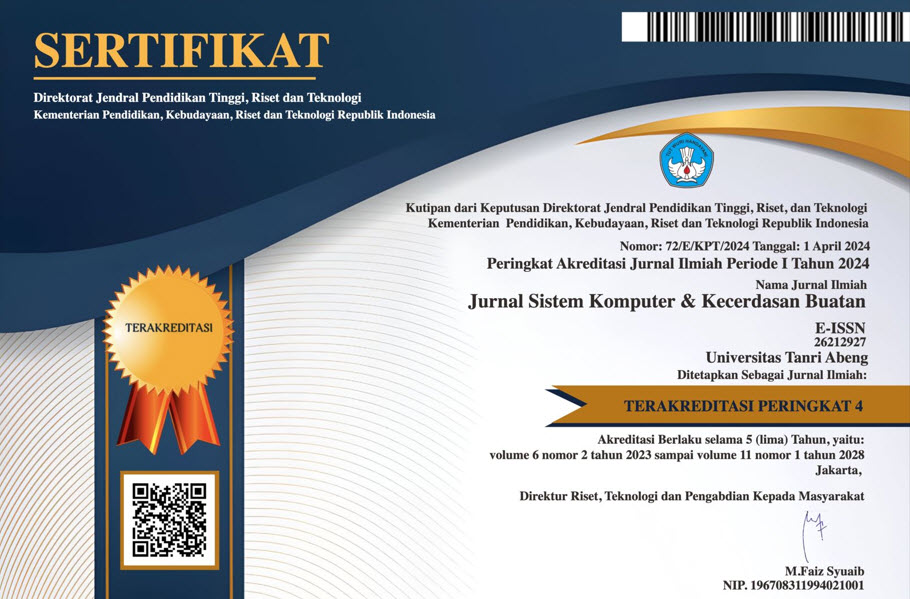Analisis dan Perancangan Simulasi Perbandingan Kinerja Jaringan Komputer Menggunakan Metode Protokol Routing Statis, Open Shortest Path First (OSPF) dan Border Gateway Protocol (BGP) (Studi Kasus Tanri Abeng University)
DOI:
https://doi.org/10.47970/siskom-kb.v4i2.189Kata Kunci:
Routing, Static, OSPF, BGPAbstrak
Network is a communication between two devices to communicate with each other either using wire or wireless media. The LAN network topology used at Tanri Abeng Unversity still uses a static routing topology, where the routing process is still done manually, so that if there is an addition of a new network, it will be difficult to configure the routing table. In this research, a network topology with dynamic routing methods will be built that will help improve network performance at Tanri Abeng University. The purpose of this research is to analyze the comparison of network performance at Tanri Abeng Unversity in sending data packets using static routing protocols, OSPF, and BGP based on the parameters used. In this research also, the ping process was carried out using the cisco packet tracer 100 times with the size of the data packet sent of 32 bytes for each routing method to be compared. Then in this research, the test scenario was carried out eight times on each parameter of throughput, packet loss, delay, and jitter in the hope of determining which routing method is more optimal among static routing, OSPF, and BGP at Tanri Abeng University. The test results show that BGP routing for throughput and packet loss parameters is superior to other routing methods, while OSPF routing for delay and jitter parameters is superior to other routing methods.











